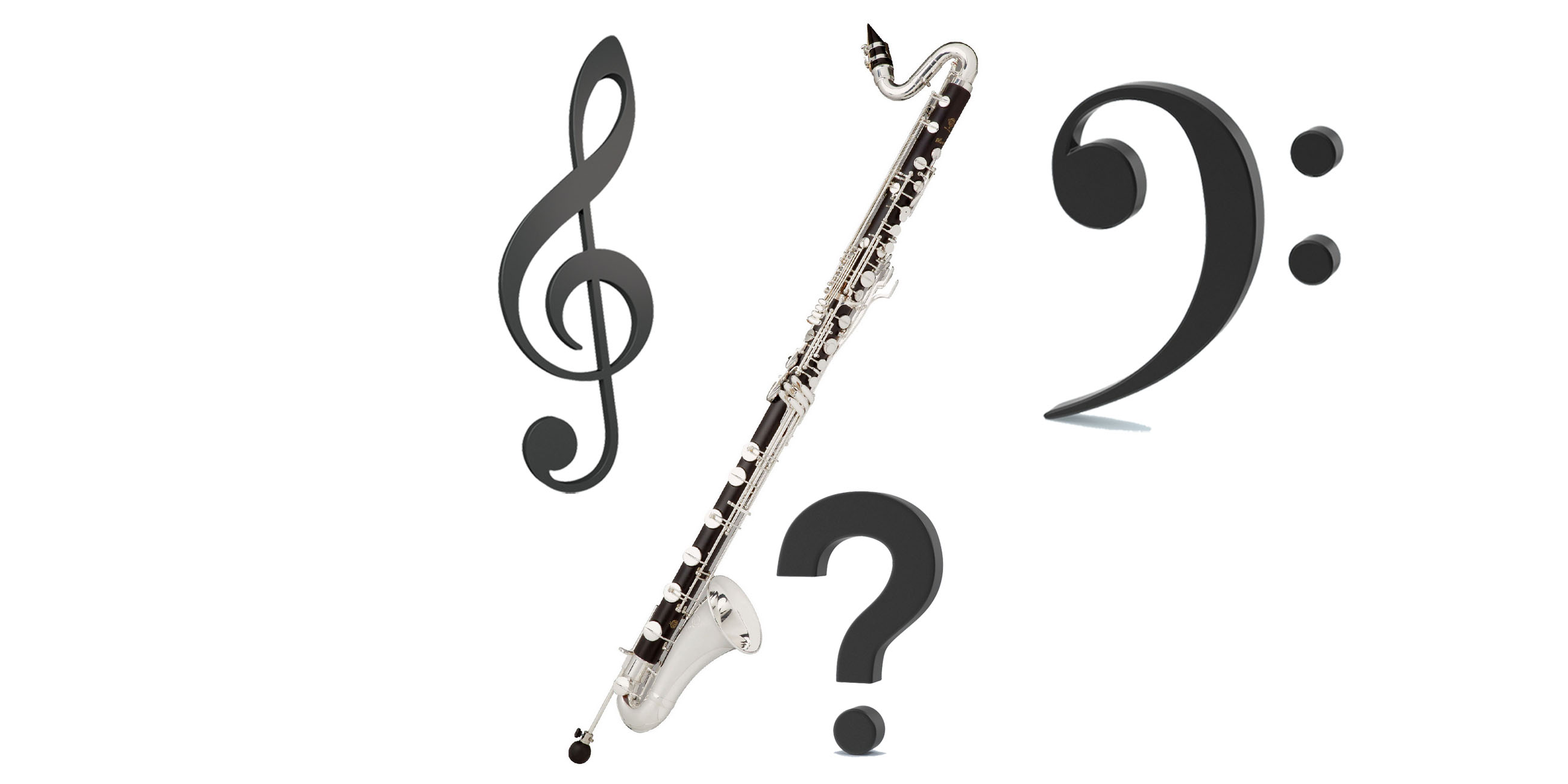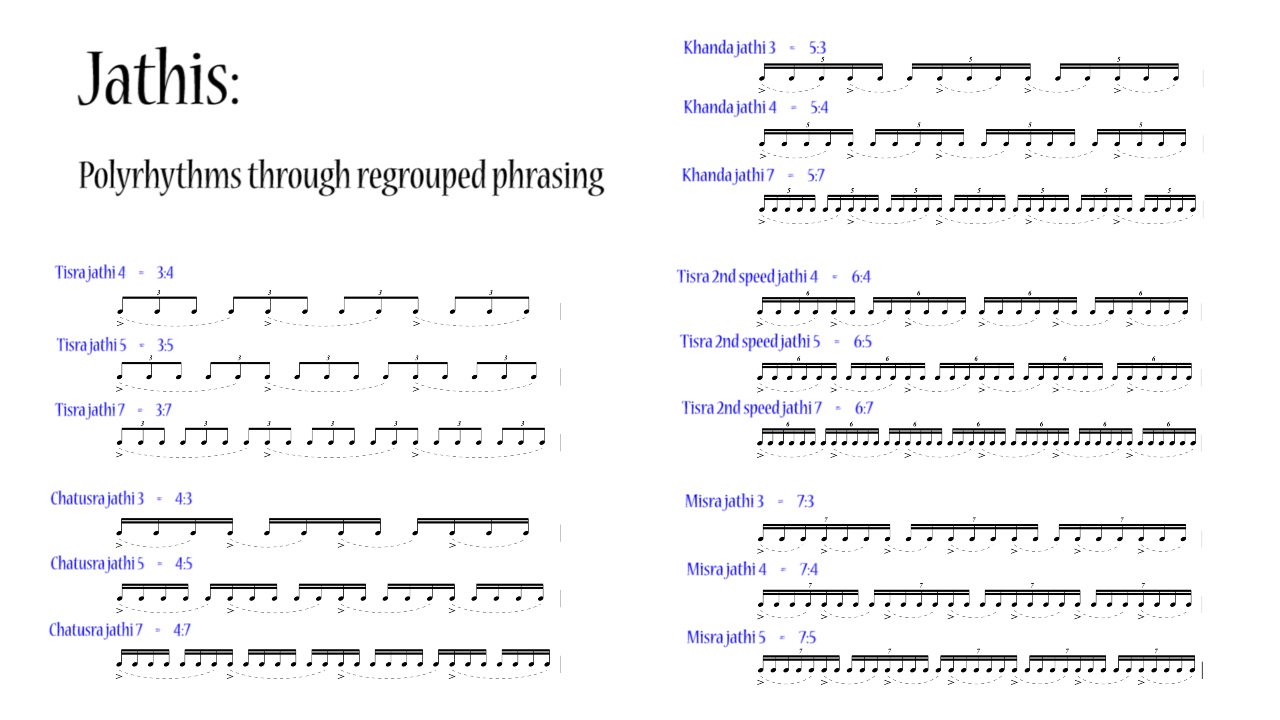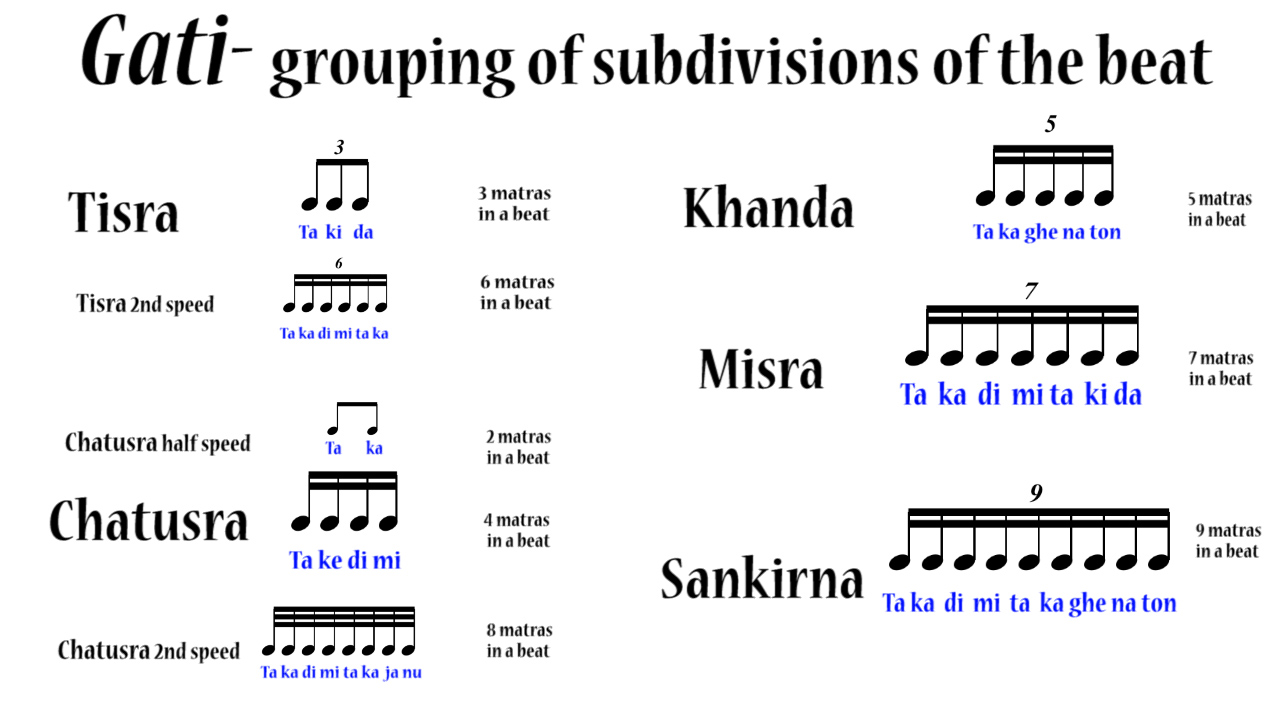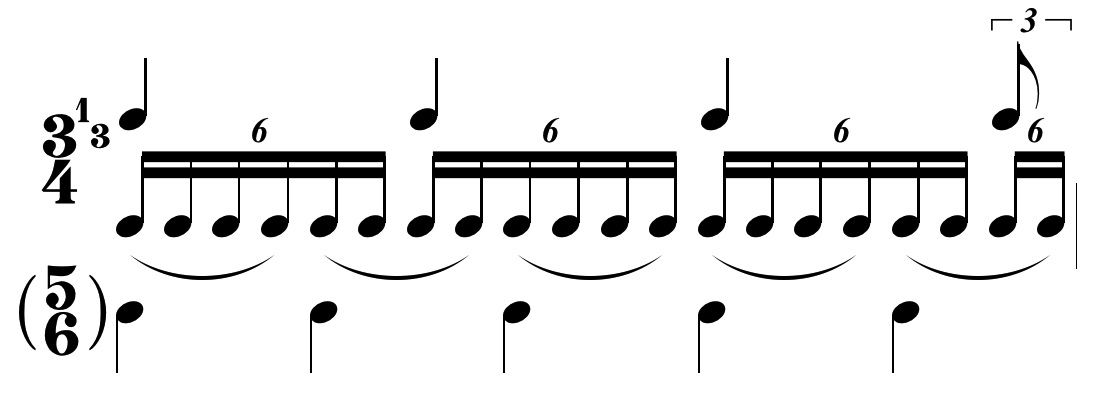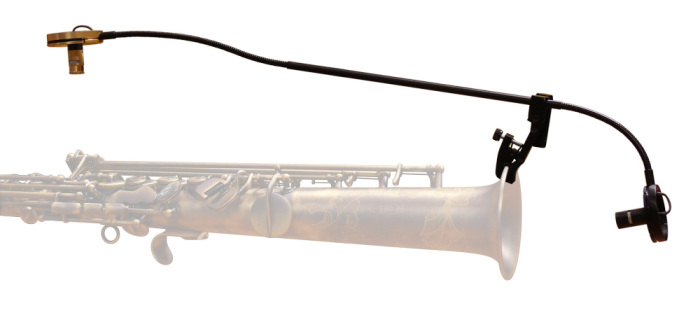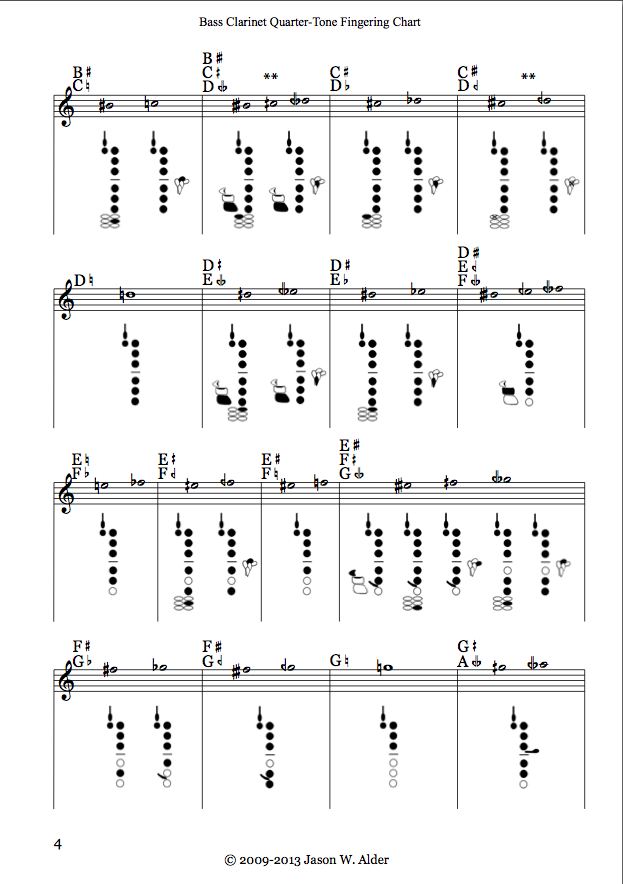I started making a list of a few albums I knew that had contrabass clarinet recordings on them. I never expected that list would grow to nearly 70 albums!
Are you playing a piece for bass clarinet that uses both bass and treble clefs? Confused about which octave you should be in? Read this!
In the last lesson we worked on phrasing the gatis within each beat. This lesson is going to build on the gati system through rephrasing, called jathi. In a jathi we’ll be using the speed of one gati, but phrasing using another. For example we’ll take the Chatusra gati, which is four subdivisions to the beat, but phrase it using Tisra, in threes, but keeping the Chatusra speed. In Western terms, we’ll take sixteenth notes, but rather than phrasing them as four to the beat, we’ll accent every third sixteenth note.
I’ve decided to start a series of video lessons teaching the application of Karnatic rhythmical techniques to Western music. I want to discuss, over a series of lessons, some of the most practical elements that we can take from using these techniques, which help in complex rhythmical music that we see in Western music. These lessons will deal with things such as odd subdivisions of a beat like quintuplets and septuplets, odd meters like 5/8, 7/8, 11/8 or even more complex like 18/16, polyrhythms, polymeters, polypulses, tuplet ratios, embedded tuplets, and irrational rhythms.
Recently a friend posted a photo on Facebook of a bar of music she encountered and wasn’t sure how to count it. It was a bar of 4/6, and later in the discussion she posted another one of 5/6. How does one actually count a 4/6 or 5/6 bar?
Micing a clarinet, and especially a bass clarinet, is difficult. I had a list of several requirements of a microphone…
I’ve decided to start posting product and gear reviews, something I had been debating doing for a while…
A few years ago I set out with the task of writing a fingering chart for quarter-tones for the bass clarinet. I was playing a lot of music requiring them and it was getting confusing trying to remember them all, so I started writing them down. At the same time, I was playing a lot of music that would go into the extreme altissimo range 6-9 ledger lines up!) that was also requiring memorizing a lot of new fingerings. So, I combined the two efforts and made a quarter-tone fingering chart for the whole range of the instrument, from Low C to the D-quarter-flat that sits above the 9th ledger line above the staff.


